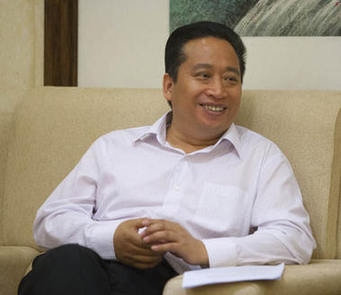A Pearl Embedded in the New Silk Road
– An Exclusive Interview with Mayor of Kaifeng Ji Bingwei
By staff reporter JIAO FENG
Kaifeng, located in the heart of China, was the world’s biggest and busiest city during the 11th and 12th centuries. As the intersection of the land and maritime Silk Roads, it was a place from where goods were dispatched and traders from the East and West met. Today, it is a major city in the central China economic region due to its integrated development with Zhengzhou, capital of Henan Province.
Ji Bingwei, Mayor of Kaifeng, expands on the city’s position as regards the development of the New Silk Road Economic Belt.
|
 |
|
Ji Bingwei, Mayor of Kaifeng. |
Rich in History and Cultural Resources
With a history of over 2,700 years, Kaifeng was the capital city of China during the reign of eight dynasties. About 1,000 years ago, as the capital of the Northern Song Dynasty (960-1127), Kaifeng was a political, economic and cultural center and a major transportation hub. The famous scroll painting Qingming Festival at the Riverside, exhibited at the Palace Museum in Beijing, is the best depiction of the prosperous city at that time.
When reflecting on the development of Kaifeng, we cannot ignore the wider picture of the Northern Song Dynasty, an era when Chinese culture, science and technology flourished. Besides paper-making, three other great inventions of ancient China – the compass, gunpowder and movable type printing – first appeared in this period. In addition, the arts of calligraphy, painting, opera, folk activities and poetry also peaked.
Notes on the Prosperous Capital compiled by people of the time records the style and features of Kaifeng. It elaborates on the daily life of the city’s inhabitants, from the elite to the ordinary folk, and includes detailed information on its streets and buildings.
This publication and other historical data have provided clues for the reconstruction of many of Kaifeng’s ancient buildings and sites. A theme park based on the scenes in Qingming Festival at the Riverside has opened, and the Jinming Pool rebuilt according to a Chinese painting of the same name. The city gate, gate towers and the drum tower were also reconstructed to replicate the original appearance of the city.
In his conversation with China Today, Mayor Ji Bingwei revealed that there are 1,945 scenic spots and historic sites, and 139 items of intangible cultural heritage in Kaifeng. They are treasures that represent the city’s cultural achievements and merits.
